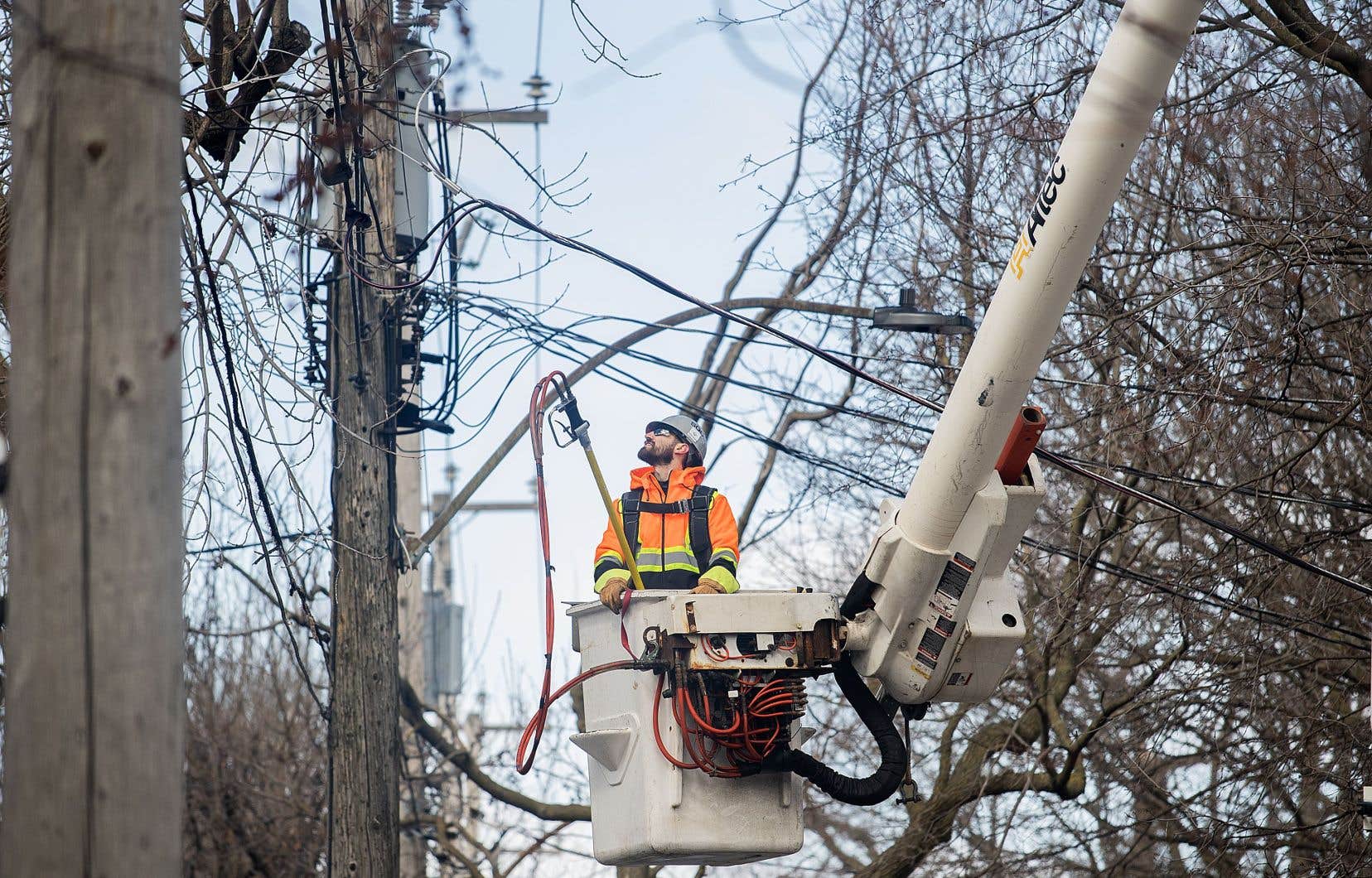As Montreal subscribers without electricity are now fewer, the City of Montreal decided on Tuesday to close the accommodation resources opened last week in the wake of the ice storm. But the Plante administration promises to reflect on the means to be put in place to make the city more resilient to extreme weather events, such as the burial of electric wires or more sustained maintenance of trees.
Tuesday afternoon, some 4,000 Montreal homes were still without power following the ice storm that occurred last Wednesday, while for all of Quebec, there were still nearly 8,000 homes without electricity.
With outages scattered across the territory, the City and the Montreal Fire Department (SIM) have agreed to switch from “intervention” mode to “recovery” mode and to close the eight accommodation centers opened last week to allow residents without electricity to enjoy some warmth. During a press briefing on Tuesday, the director of the SIM, Robert Liebmann, clarified that around 130 citizens had taken refuge in these centers to spend the night in the warmth and that others had visited them to recharge their electronic devices. .
“The challenge is that the breakdowns are very scattered throughout the territory. There are still small outbreaks all over the place,” Liebmann said. The SIM has thus preferred to opt, in collaboration with the Red Cross, for targeted aid to those in need. It is also recommended that citizens who need help contact 311. “We’re switching to recovery mode, but it’s not over,” said Mr. Liebmann.
A more resilient city
Responsible for public safety on the executive committee, Alain Vaillancourt admits that the City will have to look at the city’s resilience to climate change, a few hours of freezing rain having been enough to plunge thousands of Montrealers into darkness for several days. “It is certain that with climate change, these are issues that will be repeated more often. »
In particular, the City intends to take a closer look at the burial of electrical wires. Already, in 1961, the burial of wires was mentioned in the media to prevent breakdowns, but the project made little progress given the high costs of such an undertaking. Last Thursday, Prime Minister François Legault had mentioned an amount of 100 billion dollars to bury all the wires of Hydro-Québec. “You have to be realistic,” he said.
Except that thanks to excavation work, the authorities and Hydro-Quebec could consider accelerating the pace and thus reducing the bill, argued the critics. “We are going to look at the key sectors, those that are more conducive to doing so before others. But there is a discussion to be had with all levels of government so that this work can be done as quickly as possible. It is certain that it is something on which we will look, ”supported Alain Vaillancourt.
On the island of Montreal, about half of the electrical wires are buried, but the portrait varies from one sector to another. Throughout Quebec, between 10% and 15% of the distribution network is underground.
Parks to clean
As for the trees damaged by the ice storm, the City estimates that it will take several days to pick up the many broken branches that still litter the streets. The cleaning of the parks, on the other hand, risks taking several weeks, warns Philippe Sabourin, administrative spokesperson for the City of Montreal. “And we will need several months to take care of our parks. We made cuts as an emergency measure, but we will have to go back to make sure that the wounds are well healed and that our trees are in good health. »
For the moment, the City has not drawn up an assessment of the costs of this crisis.
The SIM reminded that citizens should not under any circumstances use fuel-burning cooking or heating appliances or kitchens inside residences. “Over the past few days, we have had several people who had to be transported to the hospital because of carbon monoxide poisoning,” said Robert Liebmann.
